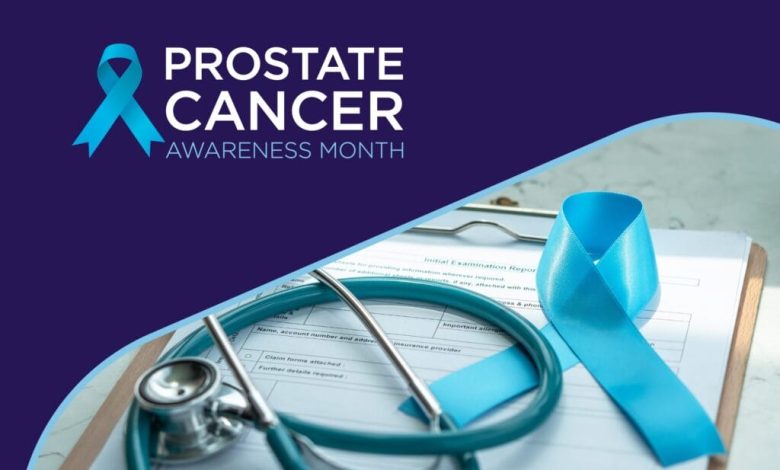The Fight to Fix Prostate Cancer Care: Why Patients Deserve Better in 2025

Prostate cancer is a disease that sits at the intersection of hope and heartbreak. Advances in diagnostics and therapy have transformed outcomes for many men, yet huge gaps remain — in access, in equity, and in the everyday experience of patients and their families. In 2025, the world has more tools than ever to detect and treat prostate cancer, but those tools are unevenly distributed, inconsistently applied, and sometimes driven more by systems and incentives than by what individual patients truly need. This article lays out where prostate cancer care stands today, why patients are still being underserved, and what must change so that the promise of modern medicine becomes a reality for everyone facing this disease.
Where we are in 2025: progress, scale, and looming burdens
Globally and in the United States, prostate cancer remains one of the most common malignancies in men. Recent data and expert reviews show that, despite declines in death rates for many cancers over the past decade, prostate cancer continues to contribute substantially to cancer morbidity and mortality — and the absolute number of cases is projected to rise sharply as populations age. A major Lancet-backed analysis and reporting in leading outlets warned that prostate cancer cases could nearly double globally by 2040 unless detection and care strategies are scaled up appropriately.
In the U.S., the American Cancer Society’s 2025 facts and figures underline a complex picture: death rates have fallen overall across the last decade for several cancers, including prostate, but the disease still accounts for tens of thousands of deaths annually and substantial survivor needs. Early detection has helped many men, but staging, comorbidity, and treatment access determine whether early diagnosis translates into lived benefit.
At the same time, the therapeutic landscape has changed in tangible ways. Novel targeted therapies and radioligand treatments that home in on prostate-specific membrane antigen (PSMA) are now shifting how clinicians approach advanced disease — with regulatory agencies updating indications and clinicians beginning to treat patients with these options earlier in the disease course. For example, regulatory expansions in 2025 have broadened access to lutetium-177–based PSMA radioligand therapy for select patients with metastatic disease, a development with meaningful survival and quality-of-life implications for some men.
All of this creates an awkward and urgent truth: more capability does not automatically equal better care. Without deliberate fixes — to screening conversations, shared decision-making, pathways to multidisciplinary care, and the stubborn problem of inequity — scientific advances will continue to benefit some patients far more than others.
The paradox of screening: life saved vs harms caused
Prostate-specific antigen (PSA) testing remains the most widely used screening tool, but it’s a blunt instrument. False positives, overdiagnosis of indolent tumors, and the cascade of biopsies and treatments that can follow are real harms that clinicians and guideline bodies have wrestled with for years. The U.S. Preventive Services Task Force (USPSTF) has taken a cautious stance: recommending individualized, shared decision-making for men aged 55–69 and advising against routine PSA screening in men 70 and older. That guidance reflects a continued tension — how to find cancers that will truly threaten a man’s life while avoiding unnecessary treatment for cancers that would never cause harm.
The result is variability in care. Some health systems emphasize opportunistic PSA testing without robust shared decision frameworks; others underuse testing and miss men who would benefit from early detection. The system-level failure isn’t PSA — it’s how we counsel, decide, and follow up. In 2025, we still lack universal, high-quality systems that embed risk-stratified screening, decision aids, and pathways that link men into active surveillance when appropriate or to guideline-concordant treatment when they need it.
Breakthroughs — and the cost of uneven uptake
Scientific progress in systemic and targeted therapies is encouraging. Radioligand therapies targeting PSMA (e.g., lutetium-177–based agents) and new combinations being tested earlier in the treatment course have produced meaningful clinical results, prompting regulatory expansions and a wave of implementation in major centers. By expanding indications for PSMA-targeted radioligand therapy, regulators have opened doors for patients who previously had few options beyond chemotherapy. This is real, tangible progress for men with advanced disease.
Yet these therapies are expensive, technically demanding, and concentrated in specialized centers. That concentration produces predictable access problems: geographic, insurance-related, and socioeconomic barriers that leave rural men and those in underserved communities unable to benefit. Additionally, despite approvals, integration into everyday oncology practice is uneven — community oncologists may lack the infrastructure, referral links, or familiarity to offer these options readily.
Beyond radioligands, precision oncology (such as PARP inhibitors for men with DNA-repair gene mutations) and improvements in androgen-receptor pathway inhibitors have broadened the therapeutic toolkit. But identifying candidates for these therapies requires genomic testing and molecular pathology — resources that are still scarce in many settings. Put bluntly: the science has outpaced equitable systems for delivery.
Equity and outcomes: the persistence of stark disparities
Perhaps the most morally troubling feature of prostate cancer care in 2025 is the persistence of disparities by race, income, and geography. In the United States, Black men have among the highest incidence and death rates from prostate cancer in the world; they are more likely to be diagnosed at advanced stages and more likely to die from the disease than white men. Internationally, low- and middle-income countries face underdiagnosis and limited access to modern therapies and supportive care. These are not statistical accidents — they reflect systematic underinvestment in outreach, screening, timely diagnosis, culturally competent care, and trial inclusion.
Structural factors compound these biological and clinical realities: lack of insurance or underinsurance, long travel distances to specialty centers, fewer primary care or urology providers in certain regions, and trial designs that underrepresent minority populations. When novel therapies roll out, they tend to be accessed first by men in academic centers and well-resourced health systems — further widening a gap that costs lives.
The patient experience: fragmented, frightening, and too slow
For many men, prostate cancer care in 2025 resembles an obstacle course. Delays in diagnosis, inconsistent communication about options, and abrupt transitions between urology, medical oncology, radiation oncology, and palliative care leave patients anxious and bewildered. Treatment pathways are often determined by where a patient presents — which hospital, which city, which insurance plan — rather than by a standardized, patient-centered care plan.
Overtreatment remains a problem: men with low-risk disease sometimes receive surgery or radiation with life-altering side effects (incontinence, erectile dysfunction) when active surveillance would have preserved quality of life without compromising outcomes. Conversely, men with aggressive disease may experience delays in receiving advanced therapies or enrollment in clinical trials. Shared decision-making tools exist but are not uniformly used; when they are absent, decisions can default to clinician preference or system incentives rather than an informed patient choice.
What needs to change — practical fixes that would move the needle
The good news is that many of the solutions are known; the challenge is implementing them at scale and equitably.
- Standardize shared decision-making and risk-stratified screening. PSA testing should be embedded in structured conversations that include validated decision aids, baseline risk assessment (age, family history, race, comorbidity), and clear pathways to active surveillance for low-risk disease. Health systems should measure and report concordance with shared decision-making processes.
- Invest in diagnostics and molecular testing capacity. Equitable access to genomic testing and PSMA imaging is essential for precision treatment. Public and private payers should cover guideline-recommended testing, and workforce investments are needed so community practices can order and interpret tests, or access centralized services.
- Expand access to high-value novel therapies. As radioligand and targeted therapies become standards for certain populations, policymakers and payers must negotiate pricing, create referral networks, and fund regional centers of excellence so geographic proximity is not the primary determinant of access.
- Close the equity gap with targeted programs. Outreach programs tailored to Black men and other high-risk populations, patient navigation services, transportation supports, and culturally competent care models reduce late-stage diagnosis and improve treatment uptake. Trial enrollment must be actively diversified; that requires community engagement and trial designs that reduce barriers to participation.
- Build integrated, multidisciplinary care pathways. Prostate cancer outcomes improve when urologists, radiation oncologists, medical oncologists, radiologists, pathologists, nurses, and palliative care clinicians collaborate around a shared care plan. Virtual tumor boards, standardized referral protocols, and care coordinators can make this feasible even across health systems.
- Measure what matters to patients. Beyond survival, we must track quality of life, functional outcomes (continence, sexual function), time spent in treatment, and financial toxicity. These metrics should drive quality improvement and payment models.
- Scale public education and prevention efforts thoughtfully. Information campaigns should focus on informed choices rather than one-size-fits-all messages. Men need clear, accessible information about risks, symptoms, and the meaning of test results.
Policy levers and system-level actions
Real change will require policy action. Governments and payers can:
- Expand coverage for guideline-recommended screening discussions, genomic tests, and PSMA imaging where appropriate.
- Incentivize value-based care models that reward outcomes (including functional outcomes), not just procedures.
- Fund workforce training and infrastructure in regions and institutions that currently under-serve populations.
- Support research that prioritizes real-world implementation studies — for example, how to scale active surveillance safely in community settings, or how to integrate PSMA-based care equitably.
Regulatory agencies can help by aligning approvals with clear guidance on sequencing therapies and facilitating rapid, equitable rollout (including price negotiations and risk-sharing arrangements that increase access).
The role of clinicians, researchers, and patient advocates
Clinicians must commit to shared decision-making as the default — not the exception. Researchers should design trials with equity in mind from the start: diverse enrollment, decentralized trial models, and endpoints that include quality of life. Patient advocates and community organizations bring essential credibility and perspective — their partnerships are crucial to building trust and improving trial participation and care engagement.
Clinical societies also play a role: issuing clear algorithms that reflect both evidence and equity considerations, and providing training and tools for clinicians working in resource-limited settings.
A realistic vision for 2030 — what success would look like
Imagine a system where a 58-year-old man from a rural town can receive a structured PSA screening conversation at his primary care visit, access a local lab, and — if needed — get a timely referral to a regional center that offers PSMA imaging and genomic testing. Treatment decisions would be informed by multidisciplinary review, and men with low-risk disease would be confidently offered active surveillance with clear monitoring protocols that minimize unnecessary side effects. Advanced therapies would be available through a network of centers with telemedicine support for local clinicians, and financial assistance programs would reduce catastrophic out-of-pocket spending.
Importantly, data would show narrowing gaps: incidence-to-death ratios improving for historically underserved groups, more diverse clinical trial populations, and patient-reported outcomes that reflect preserved function and dignity. That vision is achievable, but it requires coordinated policy, funding, and a culture shift toward equity-first implementation.
Conclusion: why patients deserve better — and how we get there
In 2025, the fight to fix prostate cancer care is not just a scientific fight; it’s a moral and organizational one. We have better diagnostics, smarter drugs, and precision tools that would have sounded like fantasy a generation ago. Yet too many patients still face late diagnoses, fragmented care, and unequal access to the advances that could save years of life and preserve quality of life.
Patients deserve better because the burden of prostate cancer is not evenly shared — and neither are the benefits of progress. Fixing care requires action on many fronts: embedding shared decision-making into routine practice, building diagnostic and therapeutic capacity equitably, closing racial and socioeconomic gaps, and measuring outcomes that matter to patients.
The tools are available. The evidence is growing. What remains is the will: to align policy, payment, and practice with a commitment that every man diagnosed with prostate cancer in 2025 and beyond should have the chance to receive not just cutting-edge treatment, but the right care at the right time — delivered with dignity and equity.




